Art Dogs is a weekly dispatch introducing the pets—dogs, yes!, but also cats, lizards, marmosets, and more—that were kept by our favorite artists. Subscribe to receive these weekly posts in your email inbox.
That’s Don Featherstone. He was born in Worcester, Massachusetts in 1936, and attended art school at the Worcester Art Museum, where he fell in love with sculpting.
After graduating, Don heard about a job at a local company specializing in plastic lawn decorations and applied. In an interview, Don recalled accepting the job due to “a great fear of starving to death.” He went on: “My friend said plastic places will prostitute my work and I'd make no money, but it was worth a try.” During Don’s tenure at Union Plastics, he designed over 750 lawn ornaments—including elephant-shaped watering cans, ostriches, Santa Clauses, and swans. Let’s take a look.
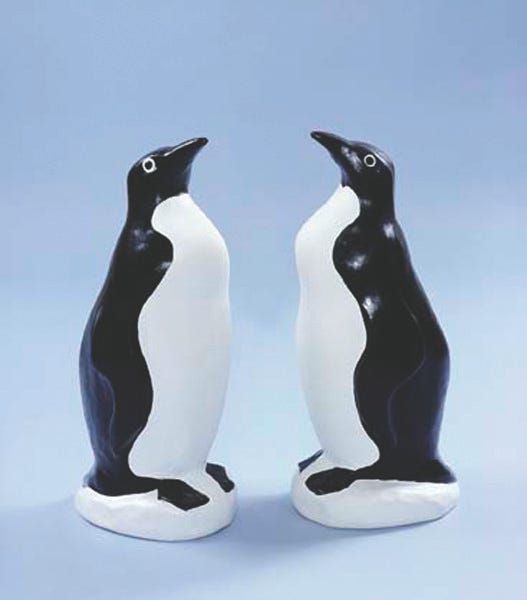

None of these plastic sculptures would prove remotely as iconic as the second lawn ornament Don designed for Union Plastics.
Perhaps you’ve seen a few of these around?
Yes, Don created the lawn flamingo, or, as he liked to call them, the Phoenicopterus ruber plasticus.

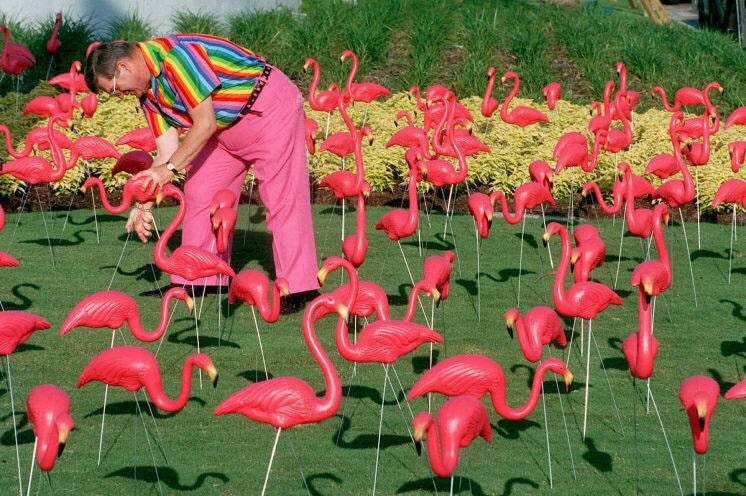

“It isn't poor taste. It's what you do with it that's poor taste.” - Don Featherstone
To make the original mold, Don worked off of images in a National Geographic article titled “Ballerinas in Pink.”1 It took him about three weeks to sculpt the birds from clay, “adding hooked beaks and ridges representing feathers,” then fastening wire legs sharp enough to pierce lawns. No one expected the flamingos would be so beloved or have such a tremendous commercial resonance, but they proved an “instant hit.” Since its introduction to the market in 1958, Don’s flamingo has been reproduced more than 20 million times.
Much has been written about the lawn flamingo, in particular how it has managed to span from low brow to high brow, and mainstream to counter cultural in appeal. The New York Times described Don’s masterpiece as a “flagrant totem of suburban satisfaction,” the Washington Post deemed it “the icon of tacky,” and the BBC called the ornament “a weird symbol of American optimism.” John Waters titled his film “Pink Flamingos” in 1972 in reference to Don’s sculpture. In the late 1990s, MOCA Los Angeles started stocking its gift shop with his flamingos, and Boston’s Museum of Fine Arts brought a pair into its permanent collection. Harvard University recognized Featherstone’s masterpiece in 1996 by presenting him the “Ig Nobel Prize” in art. In 2009, the city council of Madison, Wisconsin, voted to designate the pink plastic flamingo the city’s official bird. And in 2011, Disney made a movie with a lawn flamingo, naming the character “Featherstone” in Don’s honor.2
Don’s sculpture became so iconic that his signature was added to the injection molding in 1987 to differentiate the original from imitators.

I appreciated writer Claire Voon’s framing of the lawn flamingo phenomenon:
[The flamingo’s] enduring presence speaks to a desire to accessorize and embellish our personal spaces; to transform and color the generic with individual tastes. As Featherstone told the Chicago Tribune: “An empty lawn is like an empty coffee table; you have to do something with it.”
It seems to me that Don believed deep down that our worlds were worth decorating, and that doing so was a joyful act. “The people who use lawn ornaments are typically friendly because they’re decorating the outside of their house for someone else,” he once told an interviewer.
The philosophy extended beyond lawn ornaments. Don’s wife, Nancy, handmade all of the couple’s clothes, and they wore matching outfits every day for more than 35 years. (Many of the 600 outfits were flamingo themed.) In 1997, the New York Times asked Nancy why her and Don dressed alike, and she replied: “First and foremost, it's fun! We like it! But it's also the clearest sign we can give that we're together. For Donald and me, that's our deal.”
Here are some photos of them in their matching outfits.
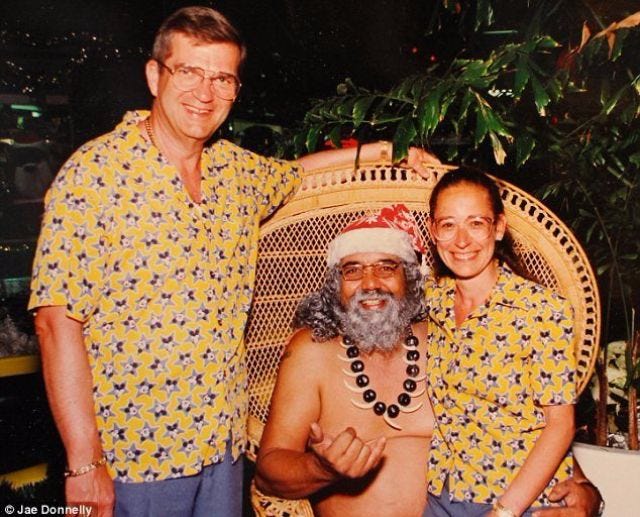
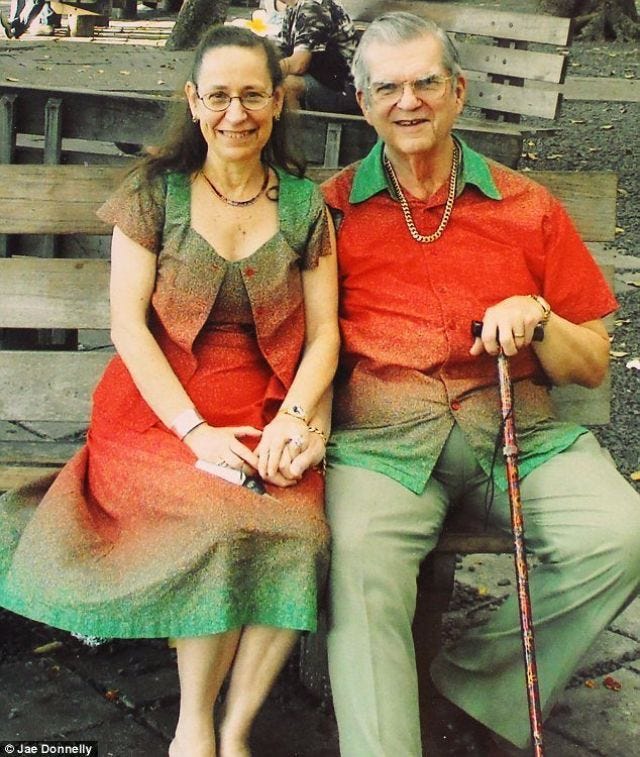

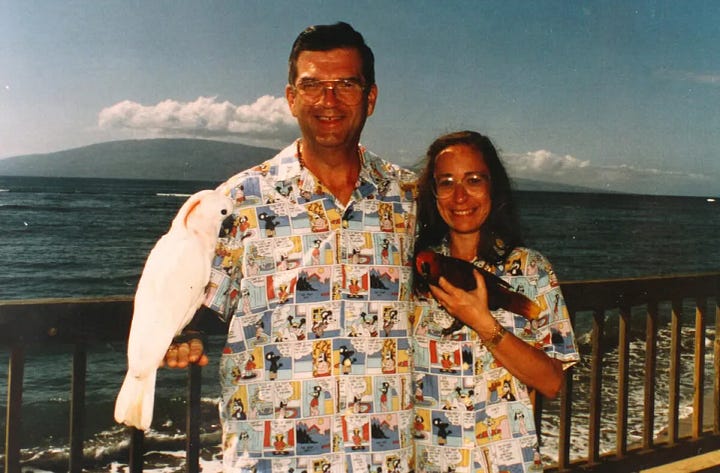
Don Featherstone died in 2015 of dementia, just hours shy of national Pink Flamingo Day. He took his final breath on a bed with “plastic-flamingo pink” sheets3 and was buried beneath a flamingo-etched tombstone.
Reflecting on his life, he told his local paper in 2006: “Things I did made people happy, and that's what life is all about.”4
Amen to that, Don. Good luck on the big lawn in the sky.

Bonus: “Bookmingo”
During retirement, Don returned to his art school roots as a painter. Five years before his death, he left a piece to his local library that felt highly relevant to the Art Dogs readership: “Bookmingo” (2010).
https://www.artsy.net/article/artsy-editorial-one-mans-pink-plastic-flamingo-landed-lawns
https://www.telegram.com/story/news/local/north/2011/02/18/a-movie-role-for-flamingos/34089942007/
https://www.artsy.net/article/artsy-editorial-one-mans-pink-plastic-flamingo-landed-lawns
https://www.npr.org/sections/thetwo-way/2015/06/23/416819751/man-who-created-the-pink-plastic-lawn-flamingo-dies






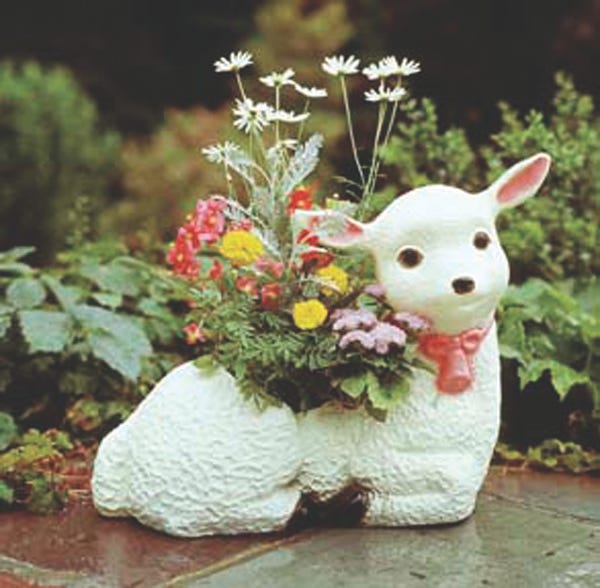
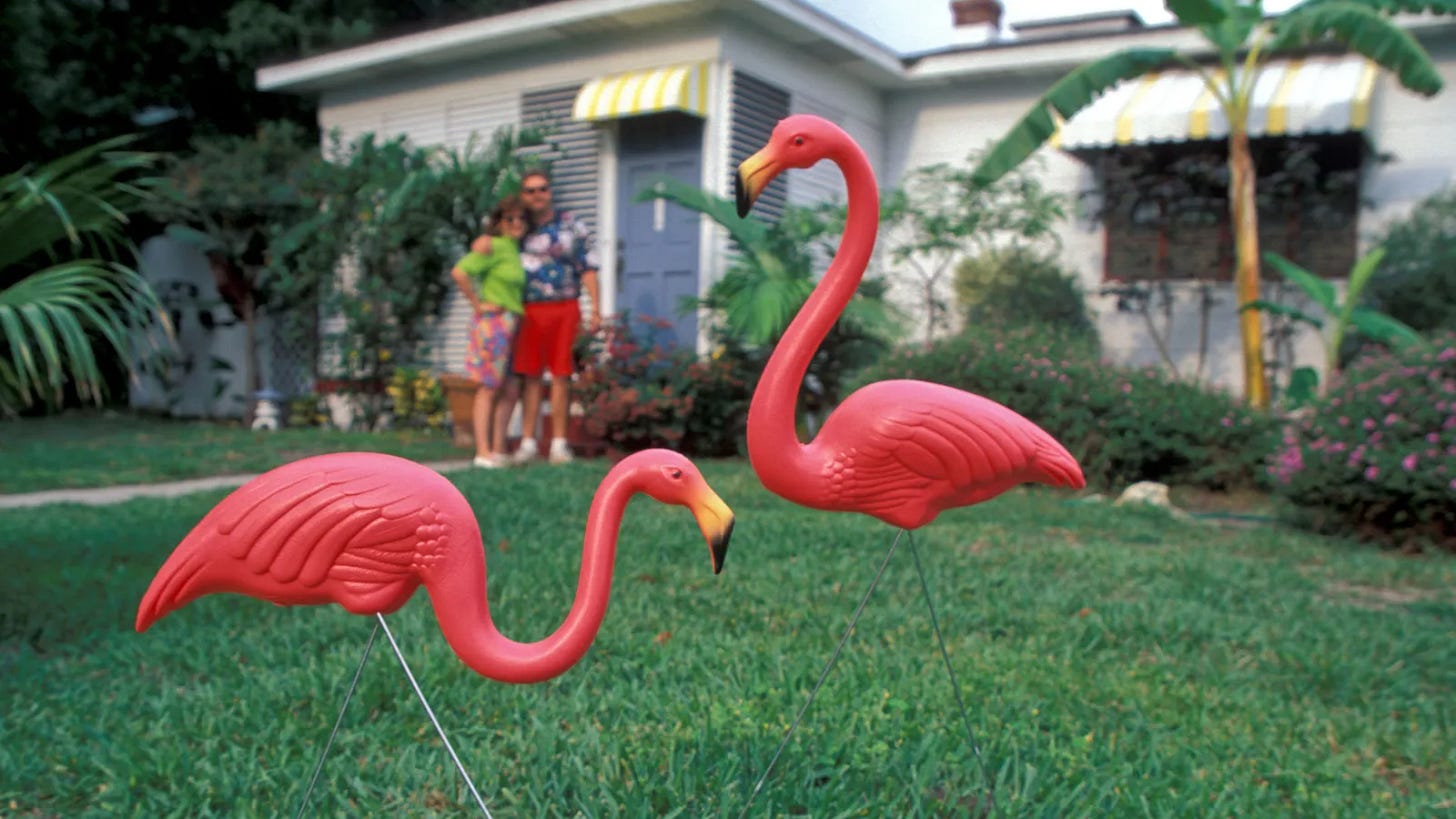



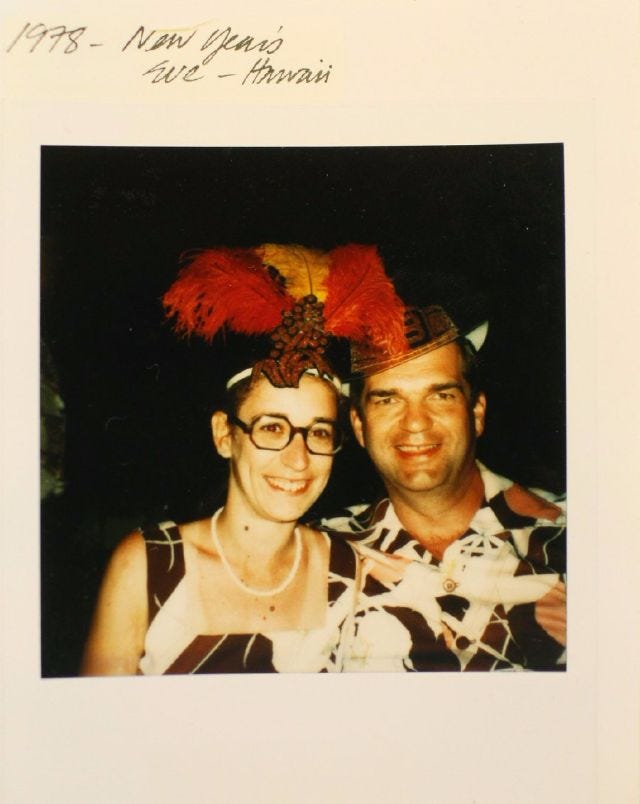


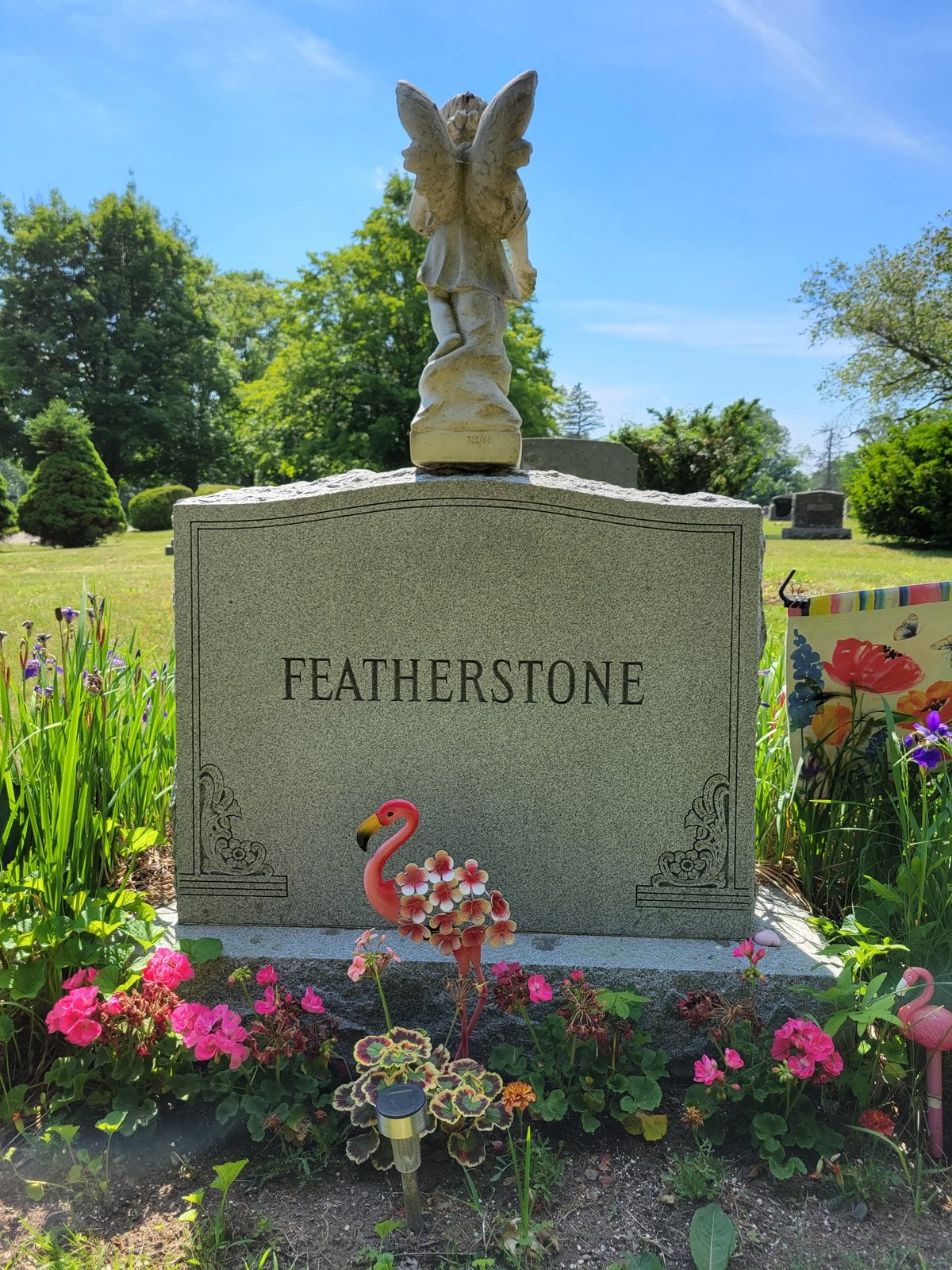
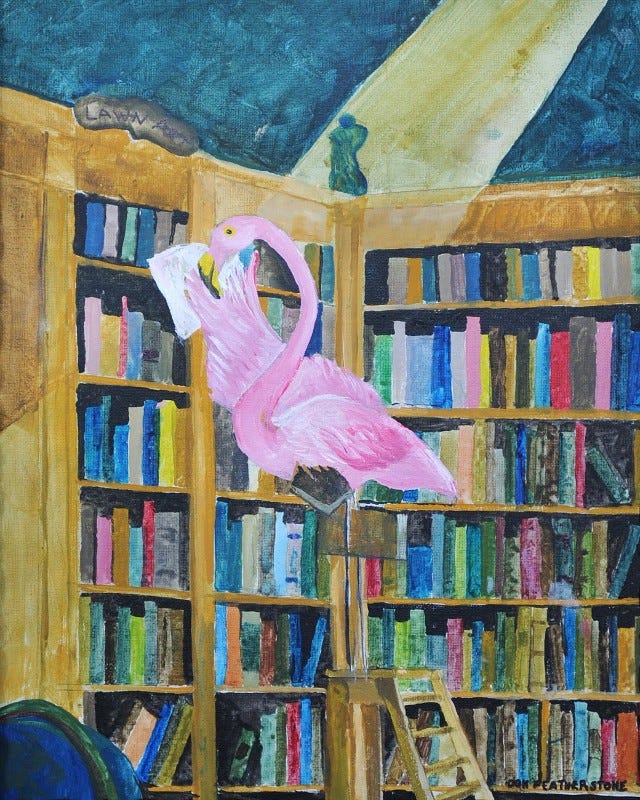
makes my day… damn!
I'm going to hug my vintage Union Plastic penguin a little tighter today.